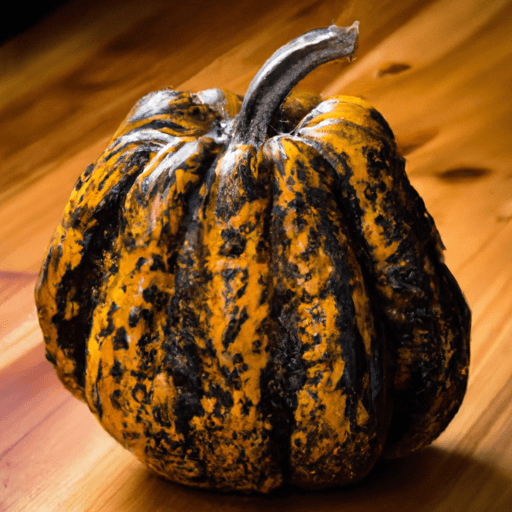All About Acorn Squash: A Delicious and Nutritious Vegetable
Acorn squash, also known as pepper squash or Des Moines squash, is a winter squash that belongs to the Cucurbitaceae family. Its unique shape and vibrant colors make it a popular choice in both sweet and savory dishes. In this blog post, we will delve into the world of acorn squash, exploring its taste, common uses in cooking, nutritional value, and uncovering some interesting history and facts.
Taste and Texture
Acorn squash has a mildly sweet and slightly nutty flavor, similar to a butternut squash but with a milder taste profile. When cooked, its flesh becomes tender and smooth, making it a versatile ingredient to work with in various recipes. The vibrant orange or yellow flesh adds a pop of color to any dish, making it visually appealing as well.
Common Uses in Cooking
Acorn squash can be prepared in a multitude of ways, making it a versatile vegetable to cook with. Here are some popular cooking methods and recipe ideas to bring out the best in this delightful squash:
Roasting: Roasting acorn squash brings out its natural sweetness and intensifies its flavor. Cut the squash in half, remove the seeds, and roast it in the oven until tender. Fill the hollowed-out center with a stuffing of grains, vegetables, or cheese for a delightful and nutritious meal.
Mashed: Boiling or steaming acorn squash and mashing it turns it into a creamy and delicious side dish. Enhance its flavor by adding butter, spices like cinnamon or nutmeg, and a touch of maple syrup for a comforting accompaniment to any meal.
Soup: Pureed acorn squash makes a velvety and satisfying soup. Combine it with roasted garlic, onions, vegetable broth, and a touch of cream for a comforting winter warmer.
Salads: Roasted acorn squash can be a delightful addition to salads. Combine it with mixed greens, walnuts, goat cheese, and a tangy vinaigrette for a tasty and nutritious salad.
Stuffed: Get creative and stuff the acorn squash with a plethora of ingredients. Ground meats, rice, quinoa, or even dried fruits and nuts can be combined with herbs and spices to create a flavorful and unique stuffing.
Nutritional Value
Not only is acorn squash a delicious addition to your meals, but it also boasts an impressive nutritional profile. It is low in calories and fat, making it an excellent choice for those watching their weight. Here are some key nutrients found in acorn squash:
Vitamin C: Acorn squash is rich in vitamin C, which aids in boosting the immune system and promoting healthy skin.
Fiber: It is a good source of dietary fiber, promoting healthy digestion and aiding in weight management.
Vitamin A: Acorn squash contains vitamin A, essential for maintaining healthy eyesight and supporting immune function.
Potassium: It is a great source of potassium, which helps maintain a healthy blood pressure level and supports proper heart function.
Antioxidants: Acorn squash is packed with antioxidants, which help protect the body against free radicals and reduce the risk of chronic diseases.
History and Fun Facts
Acorn squash has a rich history and interesting facts associated with it:
The name “acorn squash” comes from its resemblance to a large acorn nut.
This versatile squash is believed to have originated in North and Central America, where it was a staple crop for Native American tribes.
Acorn squash was an essential food source for indigenous peoples and early European settlers during the winter months due to its long shelf life.
Today, acorn squash is enjoyed worldwide and is a popular ingredient in various culinary traditions.
The vibrant colors and unique shape of acorn squash make it a common decoration in fall and Halloween displays.
Acorn squash seeds can be roasted and enjoyed as a healthy snack, similar to pumpkin seeds.
In conclusion, acorn squash is a versatile and delicious winter squash that offers unique flavors, vibrant colors, and an array of nutritional benefits. Whether roasted, mashed, added to soups, or stuffed, acorn squash is sure to elevate your culinary creations. Next time you come across this delightful vegetable, grab it and experiment with the various cooking methods to unlock its incredible potential.
Acorn squash
Origin: Acorn squash, known scientifically as Cucurbita pepo, is native to North and Central America. It has been cultivated by indigenous people for thousands of years.
Common uses: Acorn squashes are often used in savory dishes like roasts, soups, and stews. They can also be roasted, steamed, or sautéed and used as a side dish or as a filling for pastas and salads. Additionally, their sweet and nutty flavor makes them suitable for incorporating into desserts like pies and breads.
Nutritional benefits: Acorn squash is a versatile and nutrient-rich vegetable. It is low in calories and a good source of dietary fiber, potassium, and vitamins A and C. It also contains antioxidants that help protect against cell damage.
Unique properties: Acorn squash is characterized by its distinct acorn shape and ribbed skin. The skin ranges in color from dark green to yellow-orange. The flesh of the squash is yellow or orange, depending on the variety, and it has a slightly sweet and nutty flavor.
Historical significance: Indigenous tribes in North and Central America have long relied on acorn squash as a staple food source. It played a significant role in their traditional diets and was often grown alongside other crops like corn and beans. The name “acorn squash” comes from its resemblance to an acorn, which is the nut of the oak tree.




Use the share button below if you liked it.
It makes me smile, when I see it.